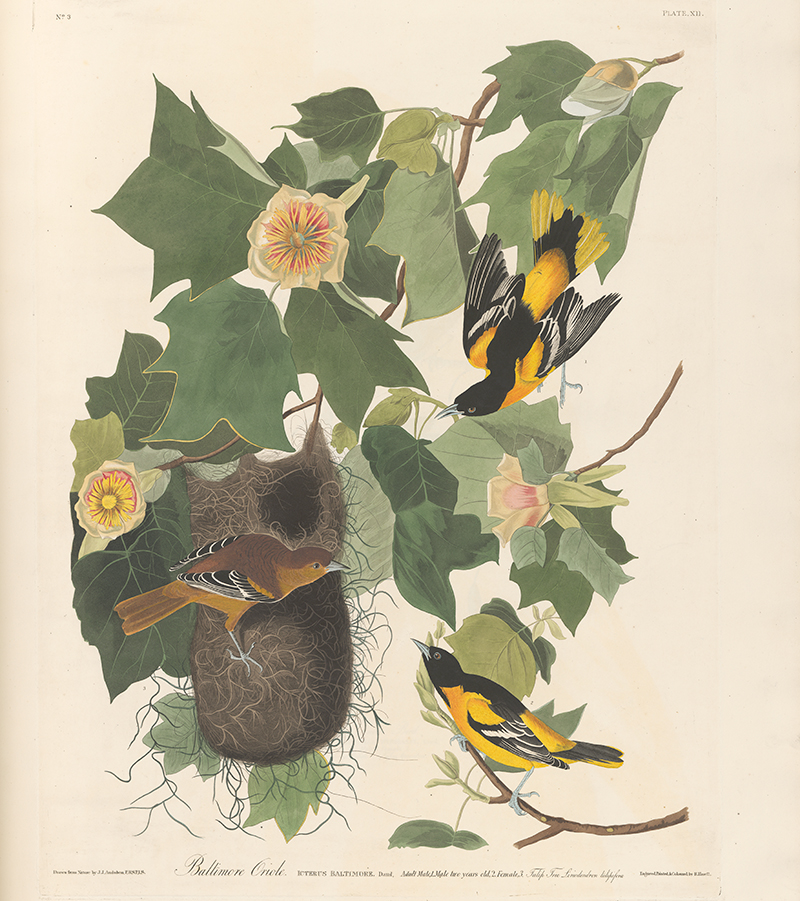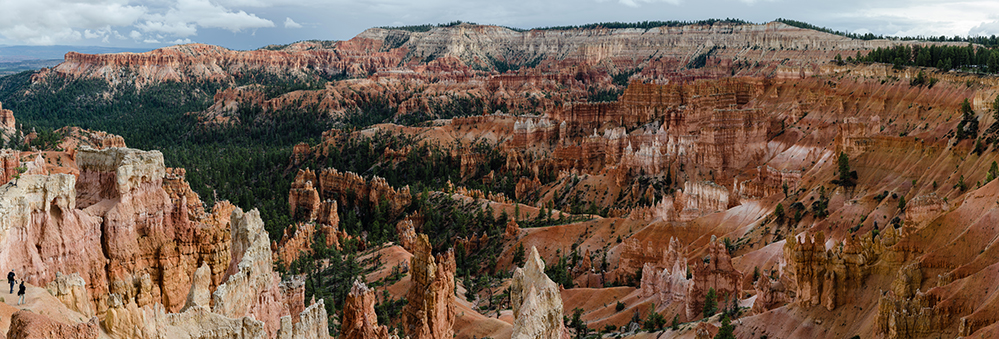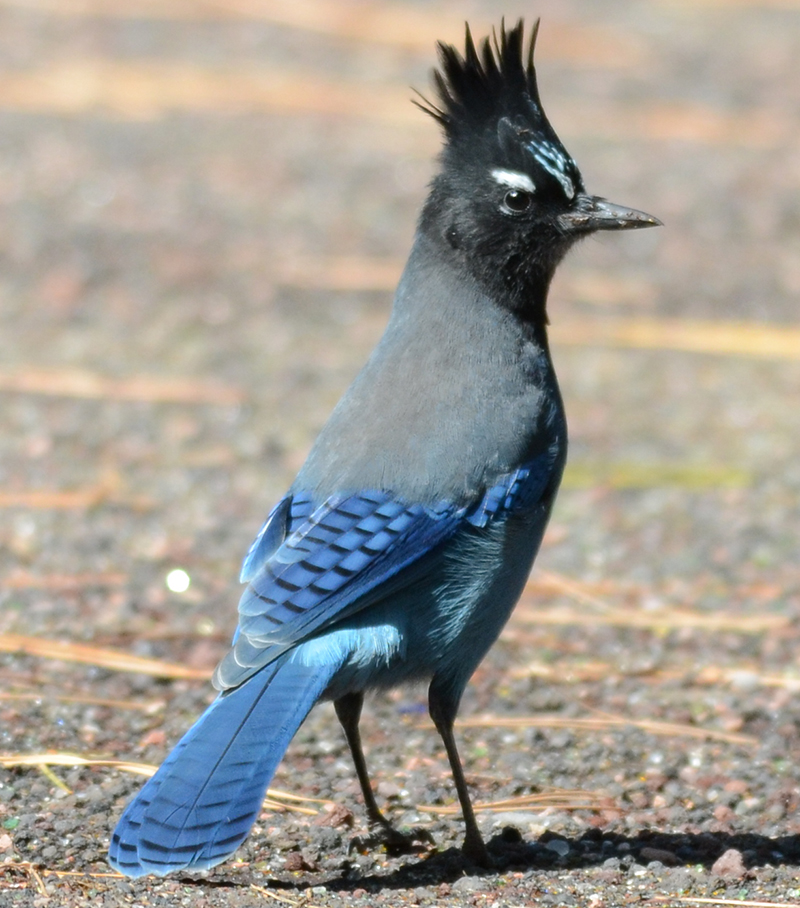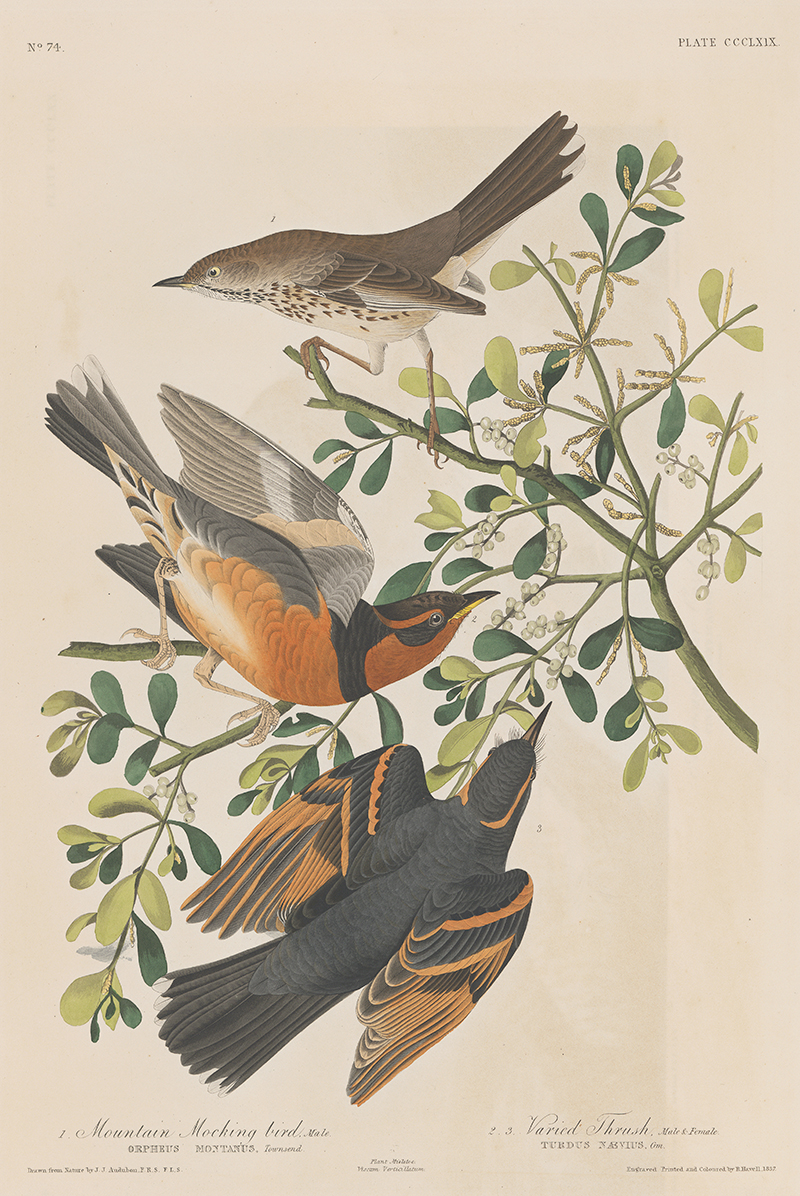Olivier Messiaen
_400x533.jpg)
Born: December 10, 1908 in Avignon.
Died: April 28, 1992 in Paris.
Des canyons aux étoiles ("From the Canyons to the Stars")
- Composed: 1971-1974
- Premiere: November 20, 1974 at Alice Tully Hall in New York City, conducted by Frederic Waldman with Yvonne Loriod as piano soloist and Sharon Moe as horn soloist.
- Instrumentation: solo glockenspiel, horn, piano and xylorimba. 2 flutes, alto flute, piccolo, 2 oboes, English horn, 2 clarinets, E-flat clarinet, bass clarinet, 2 bassoons, contrabassoon, 2 horns, 2 trumpets, piccolo trumpet, 2 trombones, bass trombone, bamboo wind chimes, bass drum, chimes, claves, congas, crotale, geophone, glass chimes, 4-gong, guiro, maracas, shell chimes, sleigh bells, suspended cymbals, tam tams, temple blocks, thunder sheet, triangle, whip, wind machine, wood block and strings
- CSO notable performances: These are the first CSO performances of Des canyons aux étoiles.
- Duration: approx. 92 minutes
Olivier Messiaen, one of towering figures of 20th-century French music, was born in 1908 in the ancient southern town of Avignon to Pierre Messiaen, a professor of literature noted for his translations of Shakespeare, and the poetess Cécile Sauvage. Olivier entered the Paris Conservatoire at the age of eleven to study with composer Paul Dukas, organist Marcel Dupré and other of that school’s distinguished faculty, winning several prizes for harmony, organ, improvisation and composition before graduating in 1930. The following year he was appointed chief organist at the Trinité in Paris. In 1936, Messiaen joined with André Jolivet, Yves Baudrier and Daniel Lesur to form La Jeune France, a group of young French composers pledged to returning substance and sincerity to the nation’s music, which they felt had become trivialized and cynical. Messiaen was appointed to the faculties of the Schola Cantorum and the École-Normale that same year. Called up for military service at the outbreak of hostilities in 1939, he was captured the following summer and imprisoned at Stalag VIII-A in Görlitz, Silesia. There he wrote his Quartet for the End of Time for the musical instruments available among his fellow musician-prisoners (clarinet, violin, cello and piano); the work’s extraordinary premiere was given at the camp in 1941. He was repatriated later that year, resuming his position at the Trinité and joining the staff of the Conservatoire as professor of harmony, where his students came to include such important musicians as Boulez, Stockhausen and Xenakis. In addition to his teaching duties in Paris, Messiaen gave special classes in Budapest, Darmstadt, Saarbruck and Tanglewood. He was a member of the French Institute, the Academy of Beaux Arts de Baviere of Berlin, the Santa Cecilia Academy of Rome, and the American Academy of Arts and Letters. He died in Paris in 1992.
Almost like a musical monk from a Medieval time, Messiaen’s life, works and religion are indivisible. “The foremost idea I wanted to express in music, the one that’s the most important because it stands above everything else,” he wrote, “is the existence of the truths of the Catholic faith. I have the good luck to be a Catholic; I was born a believer and so it happens that the Scriptures have always made a deep impression on me since childhood. A number of my works are therefore intended to illuminate the theological truths of the Catholic belief. That is the first aspect of my work, the noblest, probably the most useful, the most valid, and the only one perhaps that I shall not regret at the hour of my death.” Few of his compositions, however, are specifically liturgical, Messiaen having chosen rather to address the widest possible audience in the concert hall (and, with his huge music drama Saint-François d’Assise of 1983, the opera house) in the most varied and colorful style devised by any mid-20th-century composer. Messiaen explained: “God being present in all things, music dealing with theological subjects can and must be extremely varied…. I have therefore … tried to produce a music that touches all things without ceasing to touch God.”
Though he wrote works for solo piano, voices and chamber ensembles, most of Messiaen’s output is for organ or orchestra, whose vast resources of sonority are integral to his compositional style. Equally varied is the enormous range of influences that helped shape his music. Carla Huston Bell listed the following dizzying spectrum of inspirations in her 1984 study of the composer: his family (notably the refined literary tastes of his parents and the mystical Catholicism of his mother); the solid technical foundation of his early training; his interest in the rhythmic systems of ancient Greek and Asian Indian music; Gregorian plainchant; 14th-century isorhythm; Debussy; Stravinsky and Russian music; nature and birdsong; total serialization; and the symbiotic artistic interchange with his colleagues and his students.
Sonority and structure are indivisible in Messiaen’s compositions. Short blocks of music, built in From the Canyons to the Stars… almost entirely from the melodies and implicit harmonies of birdsong, are forged from precise, sharply contrasted sounds of stained-glass brilliance, from single strands of melody (the Interstellar Call must certainly be the longest passage for unaccompanied horn ever included in an orchestral work) to huge, dazzling, monolithic chord streams of gleaming instrumental alloys. These blocks are then assembled — juxtaposed, recalled, intercut, but seldom varied — in a kind of musical mosaic that Messiaen spoke of in terms of “strophe” and “anti-strophe” and “epode” (an ancient Greek poetic form of alternating long and short verses). With his mystical religiosity and his embrace of the world, his meticulous craftsmanship and his emotional sincerity, his modernity and his timelessness, Olivier Messiaen created, in the words of his student Karlheinz Stockhausen, “fantastic music of the stars.”
* * *
From the Canyons to the Stars…, composed between 1971 and 1974 on a commission from Alice Tully in observance of the American Bicentennial, was premiered at Alice Tully Hall on November 20, 1974 by the Musica Aeterna Orchestra, conducted by Frederic Waldman. The pianist was the composer’s wife, Yvonne Loriod (who wore a gown based on the colors of Bryce Canyon created especially for the occasion by Pierre Cardin), and the horn soloist was Sharon Moe. The work’s scoring — piano, thirteen solo strings, percussion and a full complement of winds — was dictated by the stage capacity of Alice Tully Hall, and its subject determined by its association with America. Messiaen immediately dismissed anything to do with “those skyscrapers I cannot stand,” and instead turned for inspiration to his large library of geographic books, where he found pictures of Bryce Canyon in Utah — “the most beautiful thing in the United States,” he said — in a volume titled Les Merveilles du Monde ("The Wonders of the World"). He spent several weeks at Bryce, Zion and Cedar Breaks with his wife during the spring of 1972 (“a good time to hear bird songs”), and drew from his experience of the fantastic colors and shapes and otherworldliness of those landscapes the spiritual context of From the Canyons to the Stars…. The work is one of Messiaen’s most powerful expressions of his synesthesia — the characteristic of having one sense triggered by another. “Colors are very important to me because I have a gift,” he said. “It’s not my fault, it’s just how I am — whenever I hear music, or even if I read music, I see colors. They correspond to the sounds — rapid colors that turn, mix, combine and move with the sounds. They are always changing, but they are marvelous and they reproduce themselves each time one repeats the same sound complex.”
Guy Lelong, the French writer with a particular interest in the interrelations of various art forms, prepared the following discussion of From the Canyons to the Stars… in collaboration with the composer:
“The canyons of Utah are the starting point for this monumental fresco in twelve movements, and the music rises to the stars, encountering during this ascension several birdsongs dear to the composer. This is a geological work whose mission is to celebrate the landscape and birds found in America, yet it is also astronomical, and, as Messiaen’s music often is, frankly religious. This pursuit of the grandiose takes place within highly developed writing. A work of ‘sound-color,’ Des Canyons aux étoiles… innovates first of all with its orchestration. Written for only 44 instruments, including a very complex percussion section that includes a wind machine and a geophone (an instrument Messiaen invented for this work), the piece produces incredible sound images due to its instrumental assembly. The solo piano either acts alone (in two of the twelve movements), alternates with, or is superimposed on the orchestra. Its mainly timbral treatment manages to achieve a complexity of sound that emulates the entire orchestra. From a formal point of view, in the same sense as in visual art, this work reflects a ‘refusal of composition.’ In other words, all the moments of musical progress appear equally important, and none of them demands attention at the expense of others.
“Part I: Le désert ('The Desert'). The desert is a symbol of the void of the soul that allows one to hear the inner call of the Spirit. That is, for Messiaen, the best way to begin this gradual journey to the stars. The theme played on the horn evokes a peaceful state; birds and desert wind (performed on the wind machine) define the vast silence of Creation.
“Les Orioles ('The Orioles'). First of the five movements consisting solely of birdsong. These are American troupials or orioles from the western United States. Most of these birds have an orange and black coat, and all of them are excellent singers. Birds are the perfect link between nature and music, between earth and sky.

Provided by the Cincinnati Public Library.
“Ce qui est écrit sur les étoiles ('What Is Written in the Stars'). MENE (‘measured’), TEKEL (‘weighed’), PARASIN (‘divided’). At the Biblical feast of Belshazzar, King of Babylon, who refused to recognize the existence of God, these words appeared in letters of fire inscribed on the wall of his palace. For Messiaen these words describe the order of the placement and movement of the stars in the universe. These words also have a musical equivalence since the letters that comprise them are here translated into notes.
“Le Cossyphe d’Heuglin ('The White-Browed Robin'). For solo piano, the second of five movements consisting solely of birdsong. Here, it is a South-African bird that sings.

Credit: Andrew MacDonald
“Cedar Breaks et le don de crainte ('Cedar Breaks and the Gift of Awe'). In his preface to the score, Messiaen refers to Cedar Breaks as 'a vast amphitheatre, sliding down towards a deep abyss,’ evoking a sense of awe at the overwhelming beauty in unspoiled nature and a symbol of the Divine Presence.

“Part II: Appel interstellaire (‘Interstellar Call’). Messiaen originally wrote this movement for solo horn as a memorial to the young French composer, and a student of his, Jean-Pierre Guézec. It became one of the main inspirations for Des Canyons aux étoiles…. In his notes to this movement, the composer quotes from the Bible: It is he that heals hearts and binds up their wounds; it is he that numbered the stars, calling each by name (Book of Psalms). O earth, cover not thou blood, and let my cry have no place (Book of Job).
“Bryce Canyon et les rochers rouge-orange (‘Bryce Canyon and the Red-Orange Rocks’). This is the central movement of the work. Bryce Canyon is a gigantic circus of fantastic formations of red, orange and violet rocks. This movement attempts to reproduce all of these colors as well as those of the Steller’s Jay (blue and black) while it flies over the canyon.


Credit: Noel Reynolds
“Part III: Les ressuscités et le chant de l’étoile Aldebaran (‘The Resurrected and the Song of the Aldebaran Star’). Again, the book of Job furnished the inspiration: ‘the stars sing,’ they possess their own natural sonority. The stars sing and the resurrected revolve around the stars.
“Le moqueur polyglotte (‘The Mockingbird’). The second movement for piano solo and the third of five movements consisting solely of birdsong. The sound suggests a large landscape, and through some inexplicable sleight-of-hand implies something that is only realized at its departure. The mockingbird launches forth and dazzles with its tricks and imitations, accumulating momentum and bursting into a blaze of hot light.

Provided by the Cincinnati Public Library.
“La grive de bois (‘The Wood-Thrush’). The fourth of the five movements consisting solely of birdsong. The song of the wood-thrush is a major arpeggio with a clear timbre. It is usually preceded by a pickup note and followed by a lower rustling. This birdsong symbolizes the archetype that God wanted, one that we realize in heavenly life.

Provided by the Cincinnati Public Library.
“Omao, Leiothrix, Elepaio, Shama. The final movement consisting solely of birdsong. These birds from the Hawaiian islands, China and India form the nucleus of this ‘long symphony of birds.’
“Zion Park et la cité celeste (‘Zion Park and the Celestial City’). Nature and the divine fuse in this vision of paradise. Those who discover the walls, trees and limpid river of Zion Park see it as a symbol of Paradise, and it provides the ultimate opportunity, in this work, to observe heaven on Earth.”

—Dr. Richard E. Rodda.